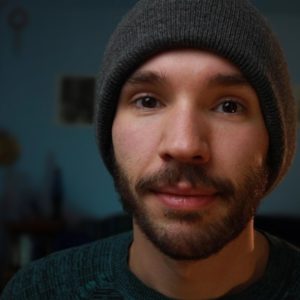Nancy Verrier, LMFT, became so deeply intrigued by her adoptive daughter’s response to having been relinquished that she earned a master’s degree in clinical psychology and wrote her thesis about what she called the primal wound—the trauma of separating a child from its mother. Her book, The Primal Wound: Understanding the Adopted Child, published in 1993, is in its 15th printing and has been translated into seven languages. Its message resonated with filmmaker and adoptee Rebecca Autumn Sansom who, along with her biological mother, Jill Hawkins, PhD, have produced a powerful documentary starring its author and exploring the theory that the trauma of relinquishment must be acknowledged before healing can occur and examining the cultural shift the book kickstarted. Reckoning with the Primal Wound is the first feature-length documentary about relinquishment trauma that explores the perspective of both adoptee and biological mother and features, in addition to Verrier, psychologists David Brodzinsky, PhD, and Amanda Baden, PhD. In September 2022, the film premiered at The Catalina Film Festival in Long Beach, California. It’s since been seen in dozens of screenings to enthusiastic audiences of adoptees and others, has been accepted into 20 film festivals. Here, we talk with the filmmaker about the genesis of the film, it’s creation, and its reception.
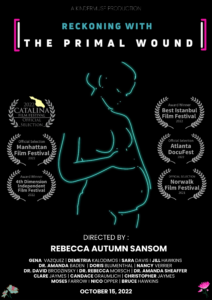 How and why did you become a filmmaker?
How and why did you become a filmmaker?
I got really frustrated with my parents when they didn’t have any footage of me from early childhood. My history, however brief, was always oddly important, and I wanted to dissect it. It was due to this frustration that I got a camera and learned how to edit in high school and have been doing that ever since. I can’t seem to stop.
Do you recall your first reading of The Primal Wound, by Nancy Newton Verrier, and what your initial reaction was?
Yes, of course. It was after years of being told by random adoptees I met (even in different countries) that I should read it. It went in one ear and out the other until I was finally ready to absorb the information. That happened to be when I was 29 years old. The outcome was immediately trying to find my biological mother. So it changed my life—for the better.
Tell us about the journey of this film. What inspired it and how widely has it been seen?
I began filming in my third trimester back in 2017 and it came out officially in October 2022. It was inspired by adoptees in my family who were struggling with addiction and I always wondered if unpacking their adoption issues would help alleviate some of their pain. They weren’t receptive to reading anything or joining support groups that I recommended, so I Googled around to see if there was another medium for the information in the book. I couldn’t find anything. I was so surprised, because at that point, the book was over 25 years old. I think I looked down at my huge belly and wondered if being a pregnant person would be an asset for such a film…then I realized Nancy Verrier lived 45 minutes away, so I emailed her, and while waiting for her to respond, I just started filming. My boss at the time told me about her childhood friend’s harrowing experience finding her birthmom that she was documenting on Facebook. She lived a couple of hours away and agreed to an interview. (That’s Doris if you’ve seen the film.) So, it just started happening, and then my mom didn’t want to come to the birth (which was fine and understandable), but Jill, my biological mother, did really want to be there. I had no idea I would be induced and have so much downtime in a labor and delivery room with my birthmother, but again, it just kind of happened. That interview ended up being so compelling. I tell people now that it must’ve been my destiny to create this documentary, because, honestly, so many things kept falling into place, and getting the input from the community over the past 18 months made it something that is beyond me and any scope I could’ve done alone. It definitely has its own life and I’m just going with it.
You noted that Nancy Verrier was initially reluctant to participate. What persuaded her?
Yes. She got misquoted in print and it scared her from doing much press and she was never going to agree to a big production or anything. But once we built up a rapport, our relationship was easy. In the interviews, it’s just me and my friend, author Sara Davis, behind the cameras. And it was my idea to let the cat, Solare, out of the back bedroom…so pretty much all of the unprofessional decisions were mine. I did add as many animals into the film as I could because they are so important to us, to relinquished people. If anyone wonders if that was intentional or not, it was.
How about your family? Were any of your family members reluctant about participating, and if so, why, and how did they come around? And at one point in the film, for example, your adoptive mother doesn’t want to appear on camera, yet she’s seen throughout the film. Did her reluctance have to do with privacy and how was she moved to be fully present?
My parents are the opposite of how I feel about being on stage or on camera. They did not want to participate. But they would drop gems all the time. I had to surreptitiously film my mom a few times. And then I couldn’t help editing the footage into my final cut. I ended up falling in love with that footage. I actually got pretty depressed upon completing the edit and knowing I had to get their permission. I was 99% sure they would veto it. But, they didn’t. I still have the text my mom sent after watching the film. “We realize it’s not about us.” That’s when I knew this project was meant to be. They still won’t come to Q&As or anything, but I will always appreciate their decision to let me use the footage. I think their roles and their story/perspectives are extremely important.
What role did filmmaker Nico Opper play in getting this film made?
Nico is an award-winning filmmaker and provided some post-production notes, but their main role here was as a participant. And of course they graciously let me use the footage from Off and Running, which I recommend everyone watch to further understand the perspective of inter-racially adopted people.
What other documentarians have influenced your work generally, and for this film specifically?
As controversial as he might be, Michael Moore’s catalog made an impact on me. I’ve seen all of his films and respect his approach to making a lasting point through documentary film. Chris Paine’s Who Killed the Electric Car? was formative as well. And of course, Tim Wardle’s Three Identical Strangers. Then for more expressive elements, I’ve been influenced by filmmaker and performance artist Maya Deren. One of my favorite quotes I’ve gotten from a viewer is that the film is ‘poetic and raw.’ That’s a huge compliment to me. I really like organizing films into parts, so for this one the four parts come from the sections of the book: “The Preface,” “The Wound,” “The Manifestations,” and “The Healing.”
What was your goal when you began—what did you want the viewer to walk away feeling/thinking—and how, if at all, did that change as you progressed?
I simply wanted my adopted relatives to go to rehab. But then as it became kind of a thing, where 1,000+ people signed up to be in the Adoptee Army section of the credits—which means they agree that more should be done to change the current narrative of adoption—I started thinking bigger picture. Which always means policy change, right? I would absolutely love for the film to be used as a tool to alleviate pain and suffering for anyone experiencing any form of genealogical bewilderment. I say that because it’s not just adoptees, it’s donor-conceived people, people dealing with misattributed parentage because of the prevalence of DNA kits, surrogacy-born people, and of course foster and former foster youth. Let’s really think about family separation and its long-term effects. And consider if we’re doing the best we can by these invisibly marginalized groups. I say invisibly because we’re not recognized as marginalized by the majority of society. But I believe we are.
How long did the whole process take from inspiration and conception to distribution and what challenges, if any, did you encounter as you moved forward?
This April it will be six years since I first had the idea. I’ve had the normal challenges of being an independent filmmaker. So trying to cover operation costs has been nonstop work, but I can’t complain because it’s really hard for a film that didn’t get picked up to make anything. If it does turn a profit I’d love to create a mutual aid fund for adoptees who are on the struggle bus. I do give 10% of the proceeds each month to an adoptee for their personal self-care fund. And then I like to say that my lobby is to get the Department of Human Services to give us all at least $5K a year for self-care and therapy.
Another unexpected challenge has been community members who do not like the book. And I understand the criticism, but I wish people would give the film a chance before writing it off just because it’s associated with the book. That’s been kind of stressful actually.
One of the things I found fascinating, and most personally resonant, was when you said “You are not the person you were going to be…which may not be a bad thing.” In an article about my own experience, I once wrote, “I can’t help but imagine, for good or for bad, who I might have been if I’d only known who I was.” These are thoughts I don’t see articulated or acknowledged often. I imagine they may be difficult for non-adoptees to understand. Can you say more about that and what you meant?
Oh, I love the way you put it. Much more poetic. But, yes, it’s a paradox of sorts. We are, but we aren’t. I feel like the Buddha said something similar, right? Like, this is because that is, and that is not because that is not. I always think, if I were Autumn, would Jill’s children born after me—Christopher, Clare and Candace—be? They are, because I went.
Someone recently sent me a passage from a book about reincarnation that made them think of their experience as an adoptee. It was about how some souls are removed from their soul family in order to evolve for the benefit of the soul family. I think that’s a positive way to look at it. But I always welcome any attempt to make it make sense. Some people have a really hard time calling me Autumn, but for me (in certain spaces) it helps bring my two timelines together. I think this is why filmmaking and being in control of the actual timeline is cathartic for me. (In editing software, where you cut the film is called the timeline).
In the film I go on to say that “I’m trying to figure it out”—knowing that I can’t really figure it out. But maybe we’ve been given the gift of examining our lives being non-negotiable?
At one point in the film, Amanda Baden, MEd, PhD, says, “One of the challenges for adoptees is that they may be seeking people to validate their experiences all the time, and it’s hard to do that when people don’t always understand or empathize with their experiences.” Is this film an effort to validate their experiences? Or your experiences?
Did you know the film had more Baden than Verrier at one point? Talk about dropping gems! And yes, this film is validating our experiences. I hear from adoptees that their main takeaway is seeing other adoptees voice feelings they’ve had and feeling like they aren’t alone anymore. That’s the best outcome I could hope for.
There’s discussion in the film about microaggressions and at one point specifically referencing comments people make when they find out one is adopted, such as, “Have you searched for your birthparents?” Having never known my mother, people asked me all my life if I searched for her. It never struck me as negative or offensive, just a natural curiosity, a way of showing interest. It’s impossible, I think, to expect others to understand how their responses may be offensive or considered microaggressions. And saying nothing seems to show a lack of interest. What are appropriate responses when one discloses that they’re adopted?
That’s a good point, and I totally hear you. I also never took it as offensive growing up, but looking back I think the question led me to try to find Jill before I was ready. I did attempt to get my records from the State of Tennessee when I was 21 years old, and it was unsuccessful. I think the main reason I wanted answers was to please other people. Which is not why anyone should do anything. But people can be aware that it’s unintentionally detrimental to adoptees’ psyche to call into question the realness of their nurturing or natural parents, to dismiss how personal and loaded the question is, and maybe just respond with a little more empathy.
I think Jill’s answer when I ask her how she would’ve felt if she’d been adopted and she says she would’ve been in constant turmoil is pretty astute.
But yes, I agree, being intentionally relinquished by your mother and being abandoned by her are different, but also not different at all. That’s a quandary. I just wonder if my relationships with my friends and you with your friends would’ve been deeper and more psychically beneficial if they were framed more sympathetically.
Now I think the best response to learning someone is adopted or dealing with maternal/gestational parent separation is to say something like, “I’ve heard that can be a difficult life experience. If you ever want to talk about it or need support I’m here to listen.”
What would you say to others about using their voices, their art, to express the experience of being an adoptee?
The nice thing about content creation is that there’s always something new to be gained from individual stories. I love learning about people through their own personal experiences, through words, songs, performances, films, memoirs, etc. I would personally love to amplify trans-racial adoptees’ stories in future projects. The added loss of culture seems extraordinarily unfair.
Tell me about the two songs that play over the end credits and their songwriters—”March 11, 1962,” by Liz Rose and Mary Gauthier, and “Wanna Be,” by Celeste Krishna. Why did you choose those?
My mentor, Demetria Kalodimos (true crime podcast producer of Carol’s Last Christmas), told me I needed to meet her friend who was adopted and a musician in Nashville. It was Mary Gauthier. When we finally met, she graciously offered me any track off of her exemplary album The Foundling, which chronicles her adoption journey, to use in the film. I could hardly pick one, but kept coming back to the lyrics in “March 11, 1962.” It seems to be the right choice considering the feedback. So many people can relate to making that call and the emotions surrounding reunion. Like one viewer says, “Seeing Mary Gauthier’s lyrics and hearing her voice while watching the names scroll through, I feel like I’m standing naked in a field and finally seen!”
I have a small record label and my artist, Celeste Krishna, wrote a song about trauma and depression for her album My Blue House. It’s called Wanna Be. She let me use it. Last week someone told me it’s the song they blast on the way to therapy. I got Celeste to send a voice note explaining the meaning and why she wrote it and that voice note was sent to another community member who was teaching a high school writing class and she used the 90-second voice note as a prompt that same day! I love that the songs are getting more exposure through the film. The line, “Analysis, paralysis, my own mind, tied knots that I cannot untie”—I couldn’t NOT use it!
At one point in the film your adoptive mother says of the book, “The author had a point of view…and I don’t know if that can be scientifically corroborated.” I’m not adopted, but as someone who was abandoned by her mother as an infant, I find that Verrier’s book, although not scientifically verified, and everything said in your film, rings true. Yet I know not everyone sees it that way. Your adoptive mother’s comment echoes some criticism of the Primal Wound—the suggestion that it’s merely a theory and that there’s no evidence to support the ideas it presents. Do you have any thoughts about that criticism? To your knowledge, is it something that Verrier has ever addressed?
I think Nancy and I agree that anecdotal evidence can be profound. That’s why I put out the call for the Adoptee Army. You can argue all day that the data isn’t there. But if thousands of people with similar experiences are saying “YES! That’s how I feel!” Can you really dismiss them all?
And how do you ethically collect data on gestational parental separation? And why don’t animal studies count? The fact that you can’t legally separate domesticated animals from their mothers before they are weened and ready—well we too are mammals. People know it’s true, but admitting it would be detrimental to too many structural belief systems. Until the majority of society thinks we are also a marginalized group, we won’t get any more civil rights. I do, however, believe the tension is building toward a tipping point. I would be honored to be a small part of the reckoning.
Has there been any criticism of the film, and if so, what is the nature of it?
The feedback has been overwhelmingly positive. The critics are people who haven’t seen the film, so do they count as critics? And like I said before, it’s been that I’m hyping the book and an adopter instead of an adoptee. Which is a fair criticism, but I’ll say that knowing Nancy has been so meaningful and she’s provided a lot of value to my life and I’ve heard from so many people that she’s added value to their lives and taken time to hear them. Unfortunately, that’s exceptional for an adoptive parent to do, to listen to adult adoptees. I wanted to pay tribute to that in some small way, and my art is film. This film does pay tribute to Verrier’s contribution while reckoning with her role as an adoptive parent. I welcome any concerns anyone has. I’m very approachable.
I’m wondering, specifically, if your empathetic view toward, and inclusion of, birthmothers’ voices has been well-accepted?
Funny you should ask this at this particular moment, because a birthmother influencer, Ashley Mitchell @bigtoughgirl just did two stellar reaction videos of the film this week! They are amazing and no, I didn’t ask her to do them, it’s totally organic. I embedded them on the website and you can find them on her Instagram page. So far, birthmothers have appreciated the film and are recommending it. I was hoping they would. It was actually screened at the CUB (Concerned United Birthparents) retreat last year if that tells you anything!
Is the film being used in educational and therapeutic settings?
I am really pushing for more of this to happen. I’ve been told it needs to be, but as an independent filmmaker, my network isn’t big in these spaces, so any help with recommendations to child welfare organizations, colleges and universities, or to therapists would be greatly appreciated.
According to a press release, the film is the first-ever customizable documentary. What does that mean and how does it work?
Thank you for noticing that. Yes! One of the benefits of being independent and owning the rights is that I can change the film whenever I want. So it dawned on me that for specific screenings I could put an organization’s thought leader in the film for 30-60 seconds for the price of the licensing fee ($400) and then it would be even more inclusive and help elevate even more people in this space who want to prevent pain and suffering within the adoption constellation. There are so many people doing important work in this space and if the film can amplify that in some way, I am happy to edit until the cows come home. Ha!
Finally, featured in the film is Moses Farrow, LMFT, an adoptee and adoption trauma educator. He says, “The adoption industry has evolved over the last 400 years or so because of careful and consistent crafting of the initial statements ‘best interest of the child’ and ‘second chance at a better life.’ Once these took hold, it was very easy to stigmatize women, to stigmatize out of wedlock pregnancies. As we become more aware and more and more in touch with this level of truth, I wonder how in the world we can reconcile that we are adopted into such a legacy? How are people so desperate to ignore such truths and realities. We have to move this narrative forward.” Can you comment on your point of view about what it would mean to move the narrative forward? What needs to happen to change the narrative?
I love how Moses puts it. And I think about this a lot. I’ve watched every season available of The Handmaid’s Tale and it’s multi-million-dollar budget, fantastic writing, and acting, AND laying out why all of this is messed up hasn’t really moved the needle as far as societal thinking about adoption goes. So, what can an indie film or grassroots adoptee centric movement do if Hollywood can’t?
I just posted on Instagram about a sketch NBC’s SNL did last month where adoptees are the punchline. It seems like we haven’t made any progress sometimes, doesn’t it? But, I’ve also had a number of friends see the film and then apologize to me, unprompted. I’m like, I wasn’t fishing for an apology, but thanks? They’re like, yeah, I know I said some wrong things to you about being adopted and I’m sorry. That, to me, is how we’re going to do it, and if the film is the thing that makes something click for people who haven’t considered our point of view before, then that’s all I could hope for as a filmmaker and as an adoptee rights activist. I appreciate all of the work Severance Magazine has done in this space and hope we can collaborate in the near future, too. Thanks for helping me spread the word about the film.
If you had to narrow the film’s message to one sentence, what would it be?
Everything you think you know about adoption is dead wrong.
How can readers see the film?
They can now buy/rent/and gift the film digitally via Vimeo which is linked at the film’s website or they can buy a DVD that I will hand make and sign from the merch tab on the website. There are also screenings(with surprise guests sometimes shhh!) and we’re cooking up some in-person screenings for this year, so if readers sign up for the newsletter, they’ll be in the know.
Rebecca Autumn Sansom is guided by the promise of a consciously evolving humanity. As a filmmaker, she was invited by Oregon’s Congressman Blumenauer to screen her feature documentary about high speed rail, Trainsforming America, at the United States Capitol in Washington, DC. She won a 2015 Midsouth regional Emmy for her work on Tout Your Town, a travel series produced by Genuine Human Productions, Nashville TN. As a native Nashvillian, Sansom’s life has been steeped in the sounds of Music City. For three years running, she’s been disrupting the entertainment industry through a safe space for marginalized talent with The Wavy Awards presented by The (NYC) Mayor’s Office of Media and Entertainment.

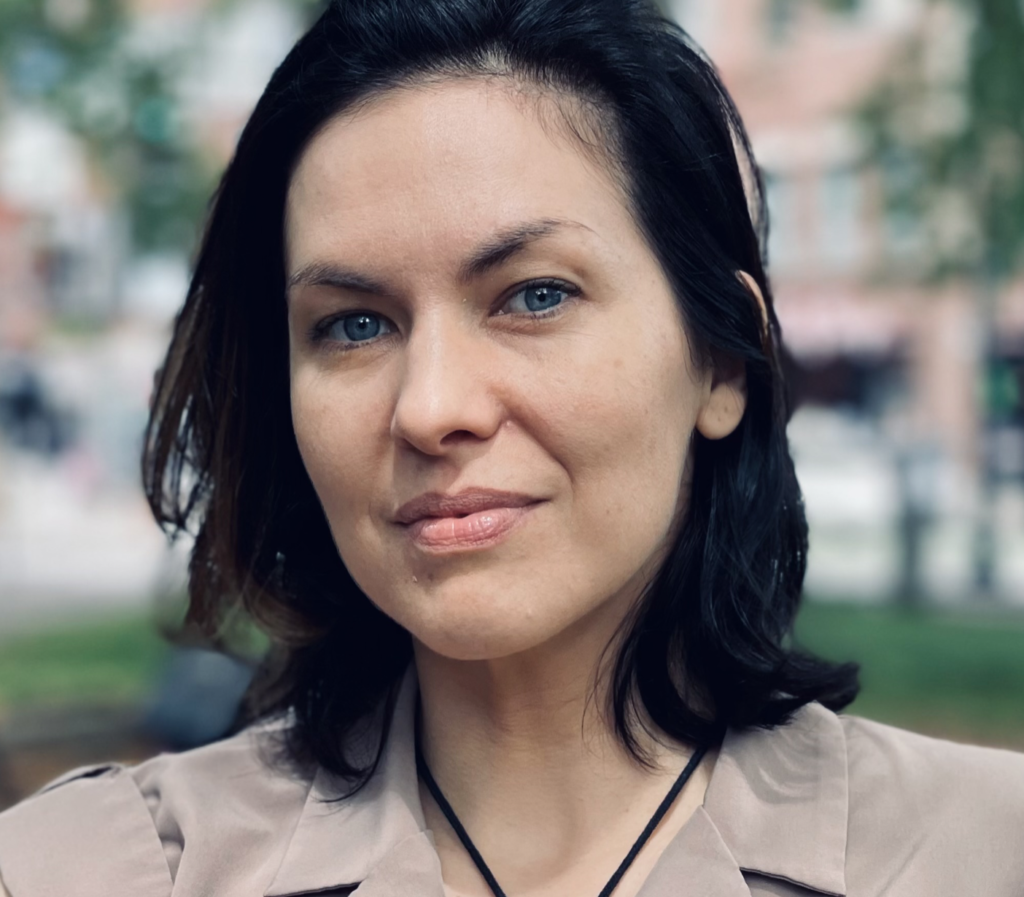
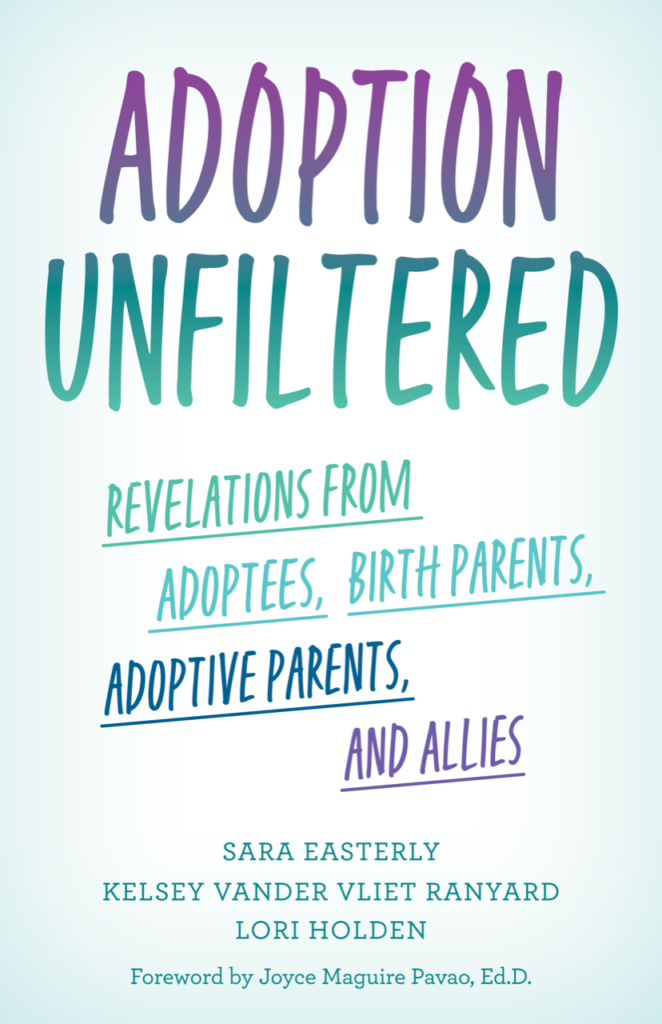

 How and why did you become a filmmaker?
How and why did you become a filmmaker? 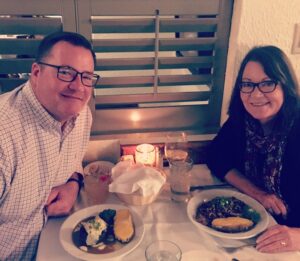
 In 1961, a New York couple sent their seventeen-year-old daughter Margaret to Lakeview Maternity Home on Staten Island, where she gave birth to a boy she named Stephen. In love with her eighteen-year-old boyfriend, George, she was determined to keep the child, but was pressured by her parents as well as social workers at the home and the personnel of the Manhattan adoption agency—Louise Wise Services—to relinquish the baby for adoption. Margaret and George planned to marry, and during the many months when she was separated from Stephen, Margaret held out hope that she and George would prevail against a system that was cruelly stacked against them and regain custody of the child. Ultimately, she was coerced into giving up her parental rights. The boy was adopted and his name changed to David.
In 1961, a New York couple sent their seventeen-year-old daughter Margaret to Lakeview Maternity Home on Staten Island, where she gave birth to a boy she named Stephen. In love with her eighteen-year-old boyfriend, George, she was determined to keep the child, but was pressured by her parents as well as social workers at the home and the personnel of the Manhattan adoption agency—Louise Wise Services—to relinquish the baby for adoption. Margaret and George planned to marry, and during the many months when she was separated from Stephen, Margaret held out hope that she and George would prevail against a system that was cruelly stacked against them and regain custody of the child. Ultimately, she was coerced into giving up her parental rights. The boy was adopted and his name changed to David.